If you think it might be broken...
We are no longer building saddle trees, but we have two videos about how Western saddles fit horses available on our westernsaddlefit.com website.
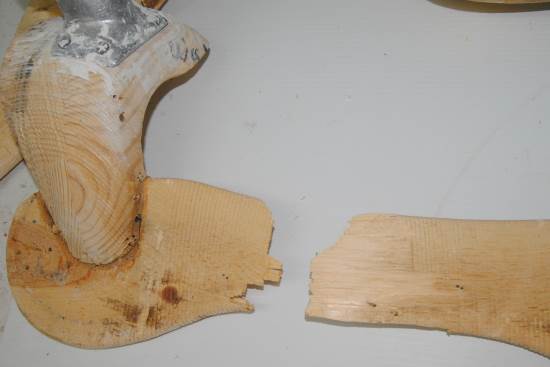
It probably is...
Unfortunately, we didn’t take pre-derawhiding pictures of this one. The story is that the saddle was built by a well known family of saddle makers here a number of years ago. The current owner recently purchased the saddle second hand. This guy cowboys for a living and we don’t know what he was doing when he “heard it crack”.
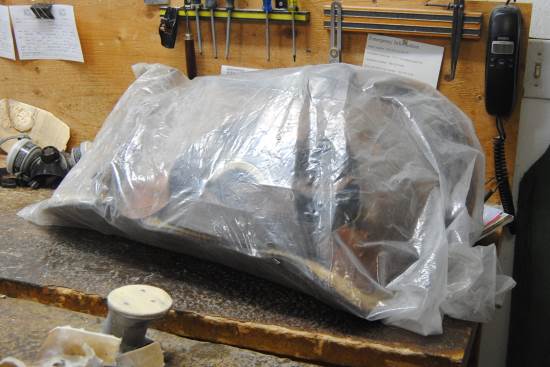
He took it to a saddle maker wanting the tree replaced. The saddle maker could barely get any movement out of it, but there was a very slight give, so he ripped the saddle apart. Even with the bare tree, there was still only a very slight give but enough to be concerned, so the tree and the leather got shipped to us.
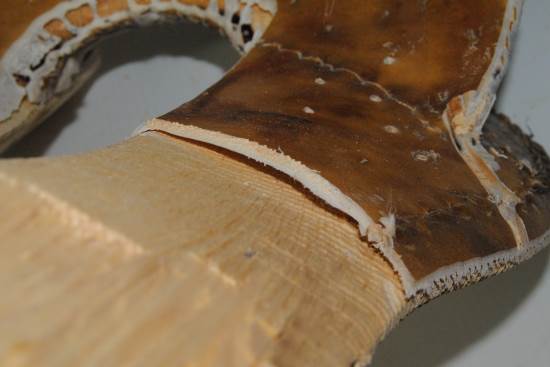
We felt the very slight give as well. The other possible sign of a break was that the tree was far from square on the table. It was possible to push it down to be square on the table quite easily as well. Not the best indication… As Rod derawhided it, he found the rawhide to be decent thickness in some areas and pretty thin in others. There were also lots of spots like this one where the rawhide wasn’t tight to the wood. That gives more room for the wood to flex – and break – without the strength of the rawhide to protect it.
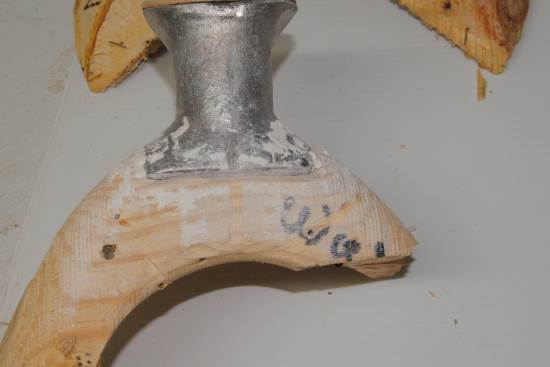
And when he got the rawhide off, the tree literally fell into two pieces, broken across the left bar and through the fork on the right side. The entire tree is only pine and obviously a production made tree, though there is no maker’s mark on it to indicate which company built it. Staples rather than nails holding the rawhide on and nylon lacing rather than deer or calf hide tell us that it wasn’t a top of the line tree originally. Interesting that it was broken so severely but only had a slight give when tested. That tells you a lot about the strength of rawhide…
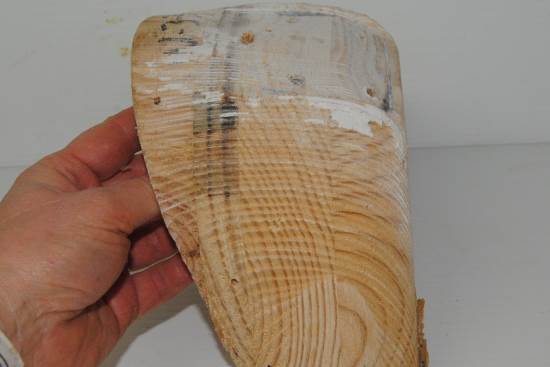
It isn’t common for a fork to break. In fact, due to its thickness, a fork should be the last thing to break on a tree. However this one, though laminated, had totally broken apart. So why did it break there?
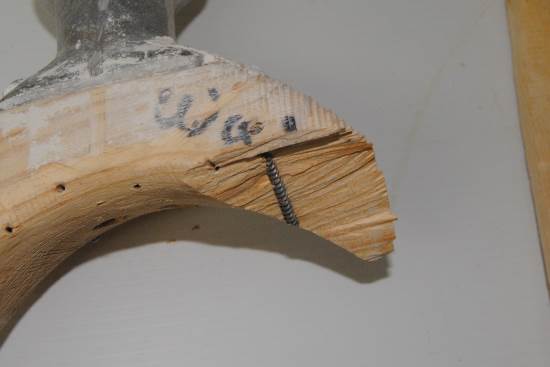
Well, it seems that the tree maker had decided to put a long drywall screw from the back forward on each side of the fork. Not sure why – maybe to ensure the laminations held? Anyway, that’s where it broke, so maybe not the best idea after all…
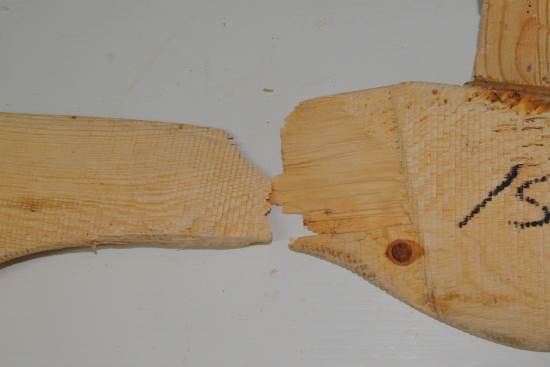
One bar was also broken, but in an interesting manner. It didn’t snap straight across, but sheared right where the stirrup went over the bar. I can’t call it the stirrup groove, since it was an Arizona bar with no back stirrup groove to it. But despite the attempt to strengthen the bar by not putting in a back stirrup groove (which is the reason for the Arizona bar in the first place) that’s where it broke.
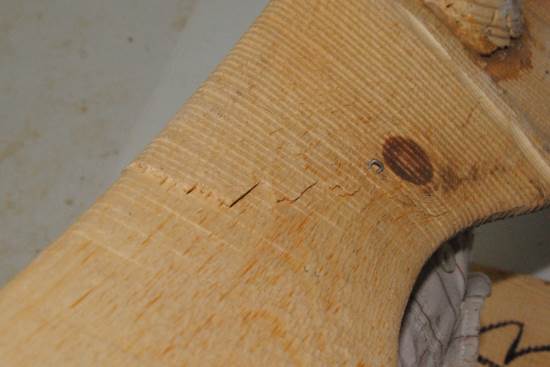
The opposite bar was also cracked but not broken – yet. Makes us wonder what the owner was doing when he heard it crack. Those kind of stories are always interesting…
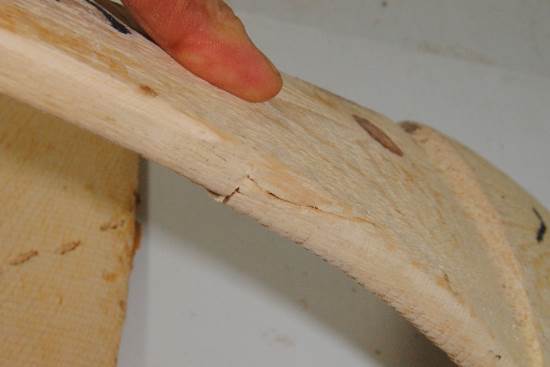
It too was shearing in the same manner. Obviously a property of the type of pine they used.
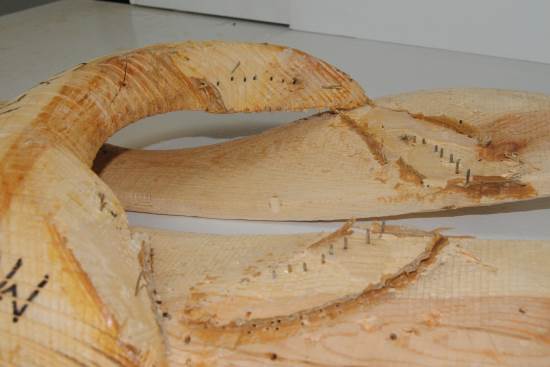
Something else that was interesting on this tree was how easy it was to take the cantle off. Usually that involves prying and digging out staples or nails - rarely are screws used. But in this case, Rod just pried back on the cantle and it pulled off of the bars.
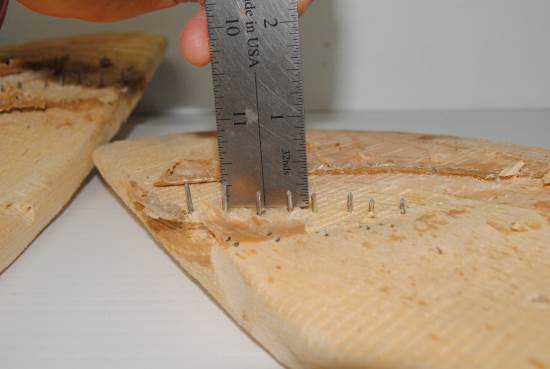
Not surprising when you actually measure how much staple was into the cantle – less than ¼” for almost all of them. What was more surprising was how well this had stood up over the years. The cantle wasn’t loose from the bars, despite just having a dab of hot glue and minimal staple length holding it. Again, it goes to show what rawhide will do for a tree…
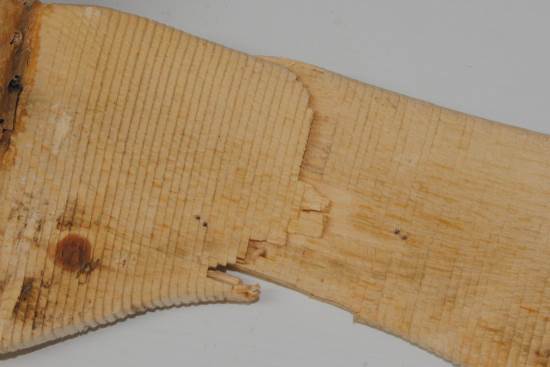
Looking at the lack of splintering of the wood around the break in the bars, it is obvious that the owner didn’t ride it after he heard it crack. If he had, the edges would have been more worn.
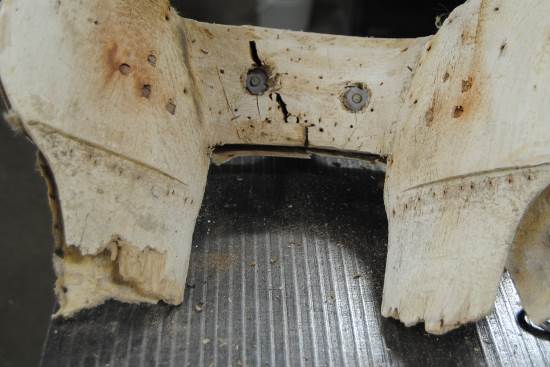
Contrast that picture to this one from another tree we discussed a while back. You can see how worn the edges of the breaks are by being rubbed back and forth against the other broken end of the bar. In that case, the customer didn’t realize his tree was broken and continued to ride the saddle until the rawhide actually gave way. In the meantime, there would have been a lot of pressure in the center of the horse’s back as the broken ends of the bars would have pressed into the horse with the rider’s weight.
So the moral of the story – if you wonder if your tree is broken or damaged, for whatever reason, there is a good chance it is even if you don’t get much movement from it. And any abnormal movement, even a slight amount, means it is worth checking out. Your horse will thank you…
